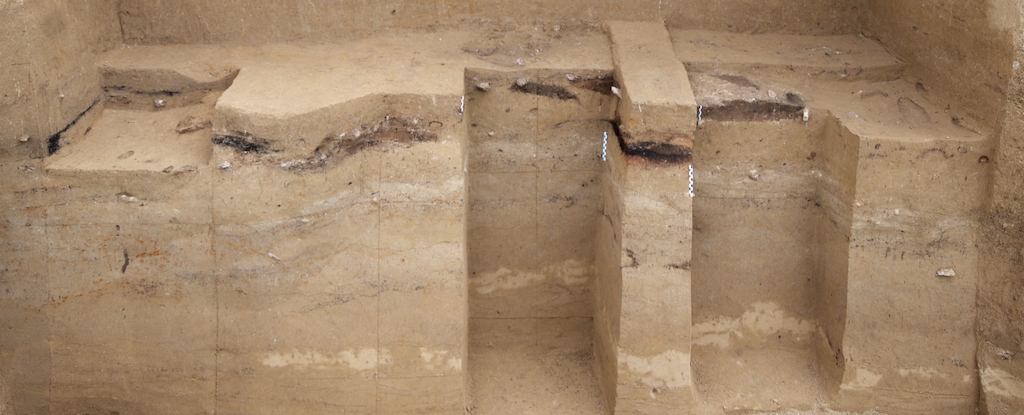A unique glimpse into Earth’s ancient past is offered by the Fossil Forest in Dorset, England, where tree remains from the late Jurassic period have been fossilised through microbial activity. Situated along the Jurassic Coast—a 95-mile UNESCO World Heritage Site—the forest features fossilised cypress tree stumps encrusted with limestone, dating back 145 million years. The remarkable preservation is attributed to algae-like microbes that encased the dead trees in calcium carbonate shortly after their death, as reported by Live Science.
Jurassic-Cretaceous Boundary and the Fossil Forest’s Formation
During the Jurassic-Cretaceous boundary, falling sea levels created coastal plains on which ancient species of trees flourished. Conifers, cycads, and tree-ferns were among the flora that thrived in this environment, according to Geology of the Wessex Coast, a website run by Dr. Ian West, Visiting Scientist at the University of Southampton. As per a report by LiveScience, the absence of flowering plants during this time highlights the distinct prehistoric ecology.
The forest’s existence was brief, with rising sea levels soon inundating the trees. Microbial activity preserved the trunks and roots, eventually forming rounded limestone mounds, locally known as “algal burrs.” These burrs, visible on the cliffs of the Jurassic Coast, provide insight into the environment inhabited by late Jurassic dinosaurs, Dr. West noted.
Historical Impact and Fossil Preservation
While fossilised tree trunks were historically present at the site, many were reportedly removed by Victorian-era collectors, as mentioned by the Jurassic Coast Trust. The remaining algal burrs, rooted in ancient soil, mainly consist of Protocupressinoxylon—a now-extinct genus of cypress. These geological formations, according to experts, serve as invaluable records of a vanished world.
The Fossil Forest offers scientists critical information on ancient ecosystems and their interactions with prehistoric life, helping to reconstruct Earth’s environmental history. It stands as a significant location for paleontological research, revealing details of a dynamic and evolving planet during the late Jurassic period.
For the latest tech news and reviews, follow Gadgets 360 on X, Facebook, WhatsApp, Threads and Google News. For the latest videos on gadgets and tech, subscribe to our YouTube channel. If you want to know everything about top influencers, follow our in-house Who’sThat360 on Instagram and YouTube.





